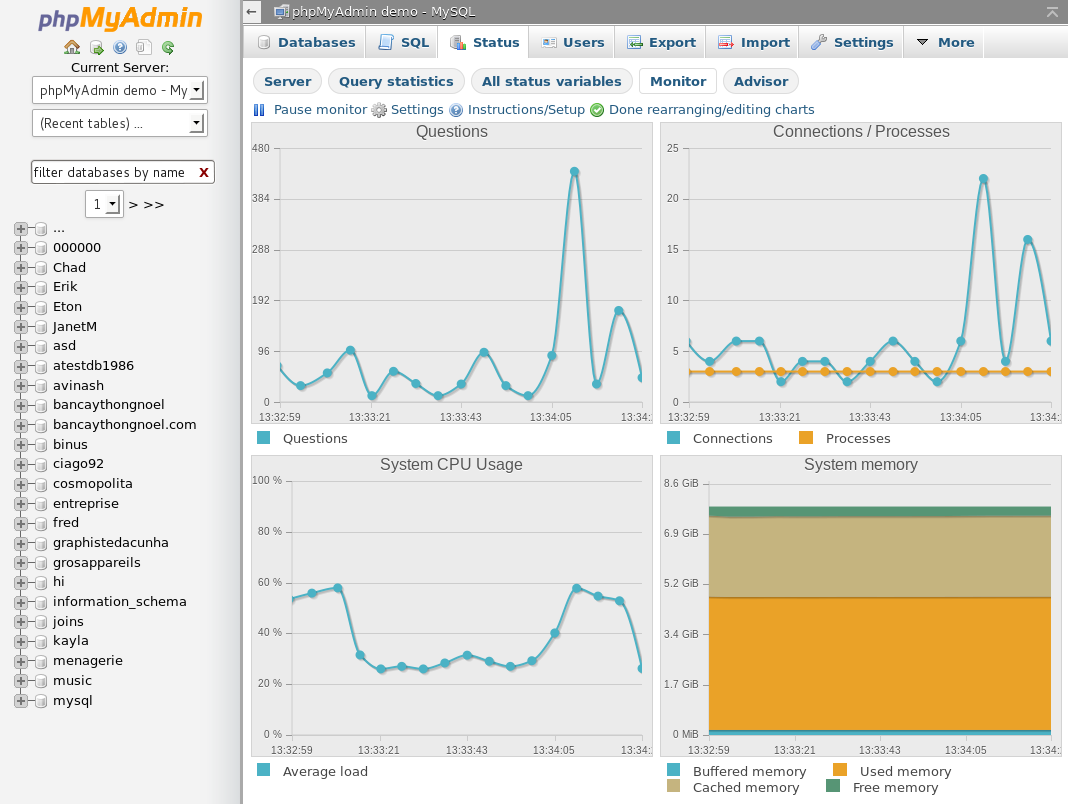SQLyog vs phpMyAdmin vs TablePlus - a quick review
In this post, we are going to quickly review three database tools SQLyog, phpMyAdmin, and TablePlus; as well as to compare pros and cons of each tool and choose the one that matches your needs.
1. SQLyog
For those Windows users, SQLyog is among the most popular solutions for MySQL database management.
-
Supported Platforms: SQLyog was built specifically for Windows and it works on Windows only.
-
Supported Drivers: SQLyog was built specifically for MySQL and currently, it only supports MySQL and the drop-placement MariaDB.
-
Pricing: SQLyog has a community version, mostly aimed at software developers and free for personal use but it has a limited set of feature. The commercial version has a 14-day trial period. After that, you will need to purchase for $299/user.

Pros:
- It’s feature rich
- Visual Query Builder and Schema Designer
- Migration Tools to Copy Database to different Host/Database.
- SSH Tunneling and SSL Connections
- Smart Autocomplete
- User management
- Database diagnostics to quickly check, repair, analyze and optimize your databases.
- The commercial version includes some advanced features such as Database Synchronization Wizard, Visual Data Comparison Wizard, Scheduled Backups/Scheduled Jobs and Query Profiler
Cons:
- The UI is a little clumsy, the icon design doesn’t always communicate the purpose of the feature.
- Only supports MySQL. If you work with more database other than MySQL and MariaDB, it’s a huge drawback.
- Only works on Windows
- It’s pricey.
2. phpMyAdmin
With a web-based build, phpMyAdmin offers a handy tool to handle the administration of a database in a web browser.
-
Supported Platforms: phpMyAdmin is a web-based administration tool, so you can get it run from any platforms with a web browser.
-
Supported Drivers: phpMyAdmin supports only Mysql and it works well with MySQL version 5.5 and newer.
-
Pricing: phpMyAdmin is free and open source. It’s available on almost every hosting service.

Pros:
- It’s portable. It can run on any computer and on any OS with a web browser.
- Easy installation. You need to have PHP and MySQL installed on your server, extract the files to a specified directory and run the install script.
- Stable due to its maturity.
- Comprehensive management of user accounts and permissions.
Cons:
- It’s web-based, so it runs slow and depends too much on the browser.
- Confusing and outdated interface. It may take some time to get used to it.
- No schema visualization.
- Does not have smart code highlighting or auto-completion capabilities.
3. TablePlus
With a native build and a lightweight size, TablePlus is a very handy tool for managing multiple databases.
-
Supported platforms: TablePlus is built native for each platform. It started out with a native version for Mac, then another version for Windows, and a version for Linux was introduced recently as an alpha release. It also has an iOS version.
-
Supported Drivers: TablePlus supports a handful of relational databases: MySQL, PostgreSQL, SQLite, Microsoft SQL Server, Amazon Redshift, MariaDB, CockroachDB, Vertica, Oracle; and two popular NoSQL databases: Cassandra and Redis.
-
Pricing: TablePlus has a free version with full set of features which you can download and use forever, but there are some usage limitations. If you use it heavily, the license costs $59 to remove all those limitations.

Pros:
- Native build for each platform so it’s fast, lightweight, and stable.
- Clean and simple interface.
- Multiple drivers support
- Multiple conditions data filter
- Queries history and keyword binding favorite.
- Streaming results and async loading to show queries results faster and doesn’t block the UI.
- Very quick inline editing for table data and structure, you also can edit query results directly.
- Smart query editor with highlight syntax, instant autocomplete, SQL reformat.
- A plugin system to extend the app.
- Quick support. TablePlus releases new updates regularly and responds to users’ requests almost immediately.
Cons:
It currently lacks of some advanced features such as ER Diagram, database compare tool to Diff and Sync, etc.
4. Conclusion
Go with phpMyAdmin if you:
- Prefer a web app
- Work with MySQL only
Go with SQLyog if you:
- Only work with MySQL
- Only work on Windows
- Are comfortable with the cost
Go with TablePlus if you:
- Are a fan of native experience
- Work with multiple databases
- Want a modern design with better usability
- Want quick support & development cycle.